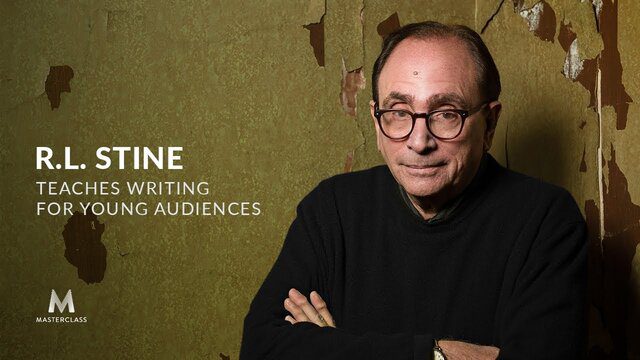“There are three different departments in the idea store. There’s experience, memory, and imagination.”
Robert Lawrence Stine, better known as R.L. Stine, is one of the most recognized authors of children’s horror novels alive today. He’s been called “the Stephen King of children’s literature,” has penned more than 300 books for kids aged 7 to 15 years old.
Originally from a small suburb of Columbus, Ohio, Bob discovered the art of suspenseful storytelling through old radio programs and classic films like It Came From Beneath the Sea and The Creature from the Black Lagoon. After graduating from Ohio State University in 1965, he moved to New York City to be a humorist. It was only through a chance turn of events that he began writing horror.
Since then, he has mastered the craft of simultaneously frightening and entertaining young readers. His prolific catalogue includes the popular Fear Street and Goosebumps series, and is widely appreciated by kids, parents, and teachers across the globe.
Over 400 million copies of his books have been sold worldwide, and they have been translated into 35 languages—making him one of the best-selling authors of all time. His Goosebumps TV show was the most popular children’s program in America for three consecutive years, and the Goosebumps movie (2015), starring Jack Black, became the #1 movie in the U.S. upon its release. A Goosebumps movie sequel is in the works.
Bob lives in New York City with his wife and business partner, Jane Stine, and continues to write the Fear Street series and the Goosebumps series, now in its 26th year.
Here are my favourite takeaways from viewing You don’t need five ideas. Or you don’t need a whole book of ideas. You only need one idea. You just need one story. Develop Ideas from a Catchy Title Cliffhangers “Every book has a beginning, a middle, and a twist.” Point of View If there’s too much thinking in a book, it slows it down Borrow your Influences Writing as a Career “Don’t try to do something that won’t fit in somewhere. Don’t try to write something that’ll be its own category, because that almost never works.” Recommended: Further Reading MasterClass is a streaming platform that makes it possible for anyone to learn from the very best. MasterClass is an online membership – accessible on your phone, web, Apple TV, Roku devices, and Amazon Fire TV – that offers classes on a wide variety of topics taught by 85+ world-class masters at the top of their fields. Their immersive learning experiences combine incredible video content, downloadable materials, and social interaction with the MasterClass community, all of which users can explore at their own pace. The annual membership is available for $180 USD, which allows unlimited access to ALL on demand MasterClass content for the year R.L. Stine Teaches Writing for Young Audiences Give One Annual Membership. Get One Free. MasterClass Annual Membership for only $180 USD All the best in your quest to get better. Don’t Settle: Live with Passion. For More Information: MasterClass Home Page

Comments are closed.